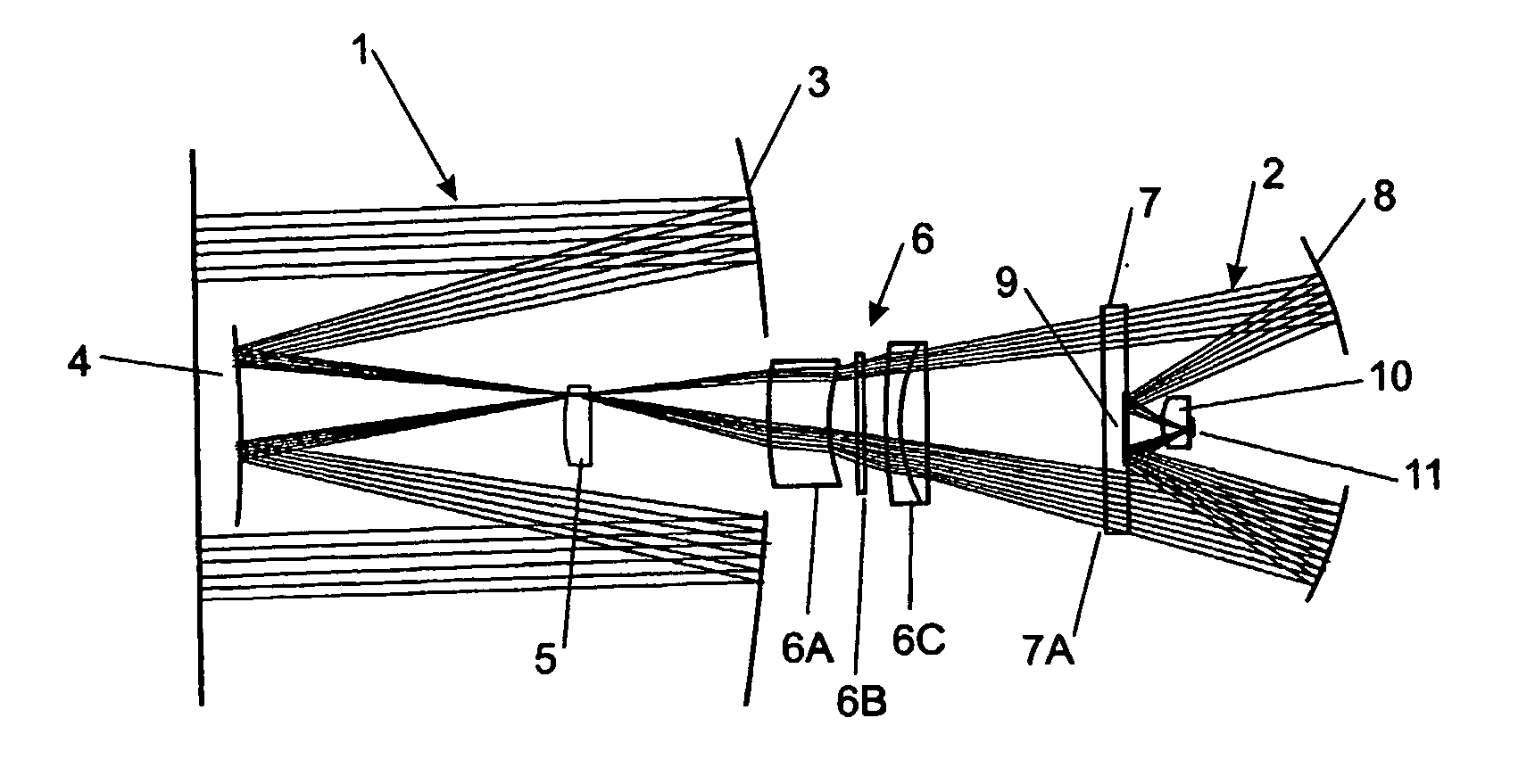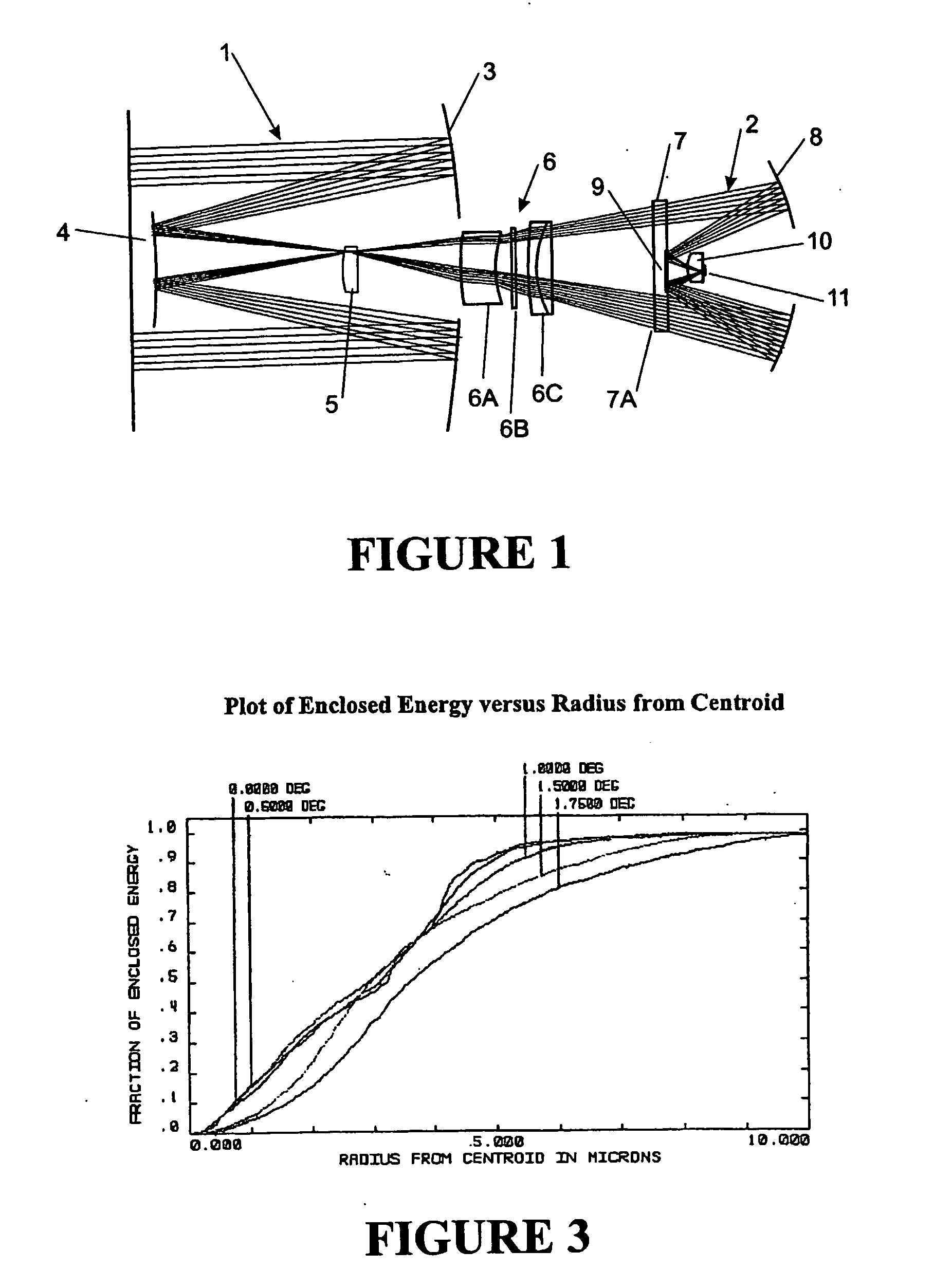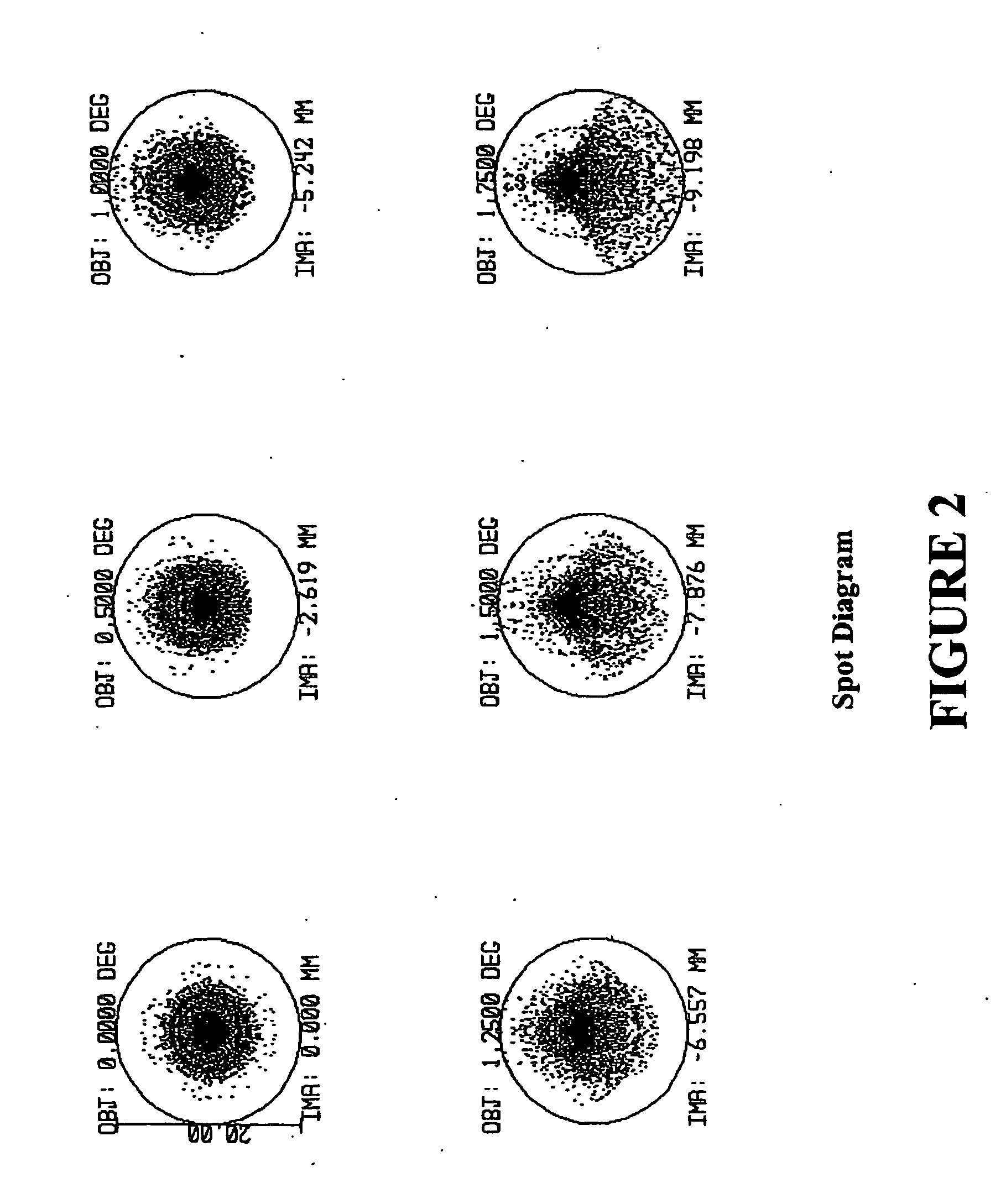Optical imaging system with aberration correcting means
- Summary
- Abstract
- Description
- Claims
- Application Information
AI Technical Summary
Benefits of technology
Problems solved by technology
Method used
Image
Examples
example system 4
[0133] Table 4 lists the parameters of a further example system having a pupil diameter of 1 m. This system has been designed in accordance with the abovementioned principle of maintaining the relay / corrector dimensions relatively constant while the Cassegrain-like front end is scaled, the 1 m system being designed to cover half the field angle covered by the 0.5 m pupil diameter system, ie 2.degree. rather than 4.degree.. Correspondingly, the primary mirror is oversize by only .about.25% in this design.
[0134] The layout of the system is shown in FIG. 9, in which like reference numerals are used to indicate like parts to the system of FIG. 1, each reference numeral being increased by the addition of 300. FIG. 10 shows the spot diagram of light distribution at the focal plane from point sources, for a passband of 405-1000 mm, over the 2.degree. field angle (showing the aberration control). FIG. 11 illustrates the fraction of enclosed energy at various radii f...
example system eight
[0145] An 8 m pupil diameter was created, to test of the limits of the scaling process. FIG. 18 illustrates the layout of the relay / corrector module and system overall, in which like reference numerals are used to indicate like parts to the system of FIG. 1, each reference numeral being increased by the addition of 600.
[0146] The prescription for this system is listed in Table 8. FIG. 19 shows the spot diagram of light distribution at the focal plane from point sources, for a passband of 405-1000 nm, over the 0.25.degree. field angle (showing the aberration control). FIG. 20 illustrates the fraction of enclosed energy at various radii from the centroid of each spot.
[0147] It is evident that there is a general degradation relative to the 4 m system performance, also a further reduction in the useable linear field diameter at the final image, based on the attainable resolution in the smaller scale systems. Moreover, the input N.A. to the corrector has had to b...
example system nine
Non-Cassegrain-like Front End with Tilted Fold Mirror
[0162] FIG. 22 shows an optical imaging system in accordance with an alternative embodiment of the present invention in which like numerals reference like parts to FIG. 1, each reference numeral being increased by the addition of 800. Again, this optical system differs from the optical system of FIG. 1 in that the front end imaging system 801, is non-Cassegrain-like. The front end imaging system 801 has a concave primary mirror 803. Light is reflected from the primary mirror 803 to a mirror M which is oriented on an angle to deflect the focus. In this embodiment, the mirror M deflects the entire relay 802 to one side. The mirror M may be oriented so that the rear end is deflected by an angle between 0.degree. and possibly up to greater than 90.degree.. In the embodiment shown the mirror is tilted at an angle of 12.degree..
[0163] The prescription for this system is listed in Table 9. FIG. 23 shows the spot diagram of light distribu...
PUM
 Login to View More
Login to View More Abstract
Description
Claims
Application Information
 Login to View More
Login to View More - R&D
- Intellectual Property
- Life Sciences
- Materials
- Tech Scout
- Unparalleled Data Quality
- Higher Quality Content
- 60% Fewer Hallucinations
Browse by: Latest US Patents, China's latest patents, Technical Efficacy Thesaurus, Application Domain, Technology Topic, Popular Technical Reports.
© 2025 PatSnap. All rights reserved.Legal|Privacy policy|Modern Slavery Act Transparency Statement|Sitemap|About US| Contact US: help@patsnap.com



